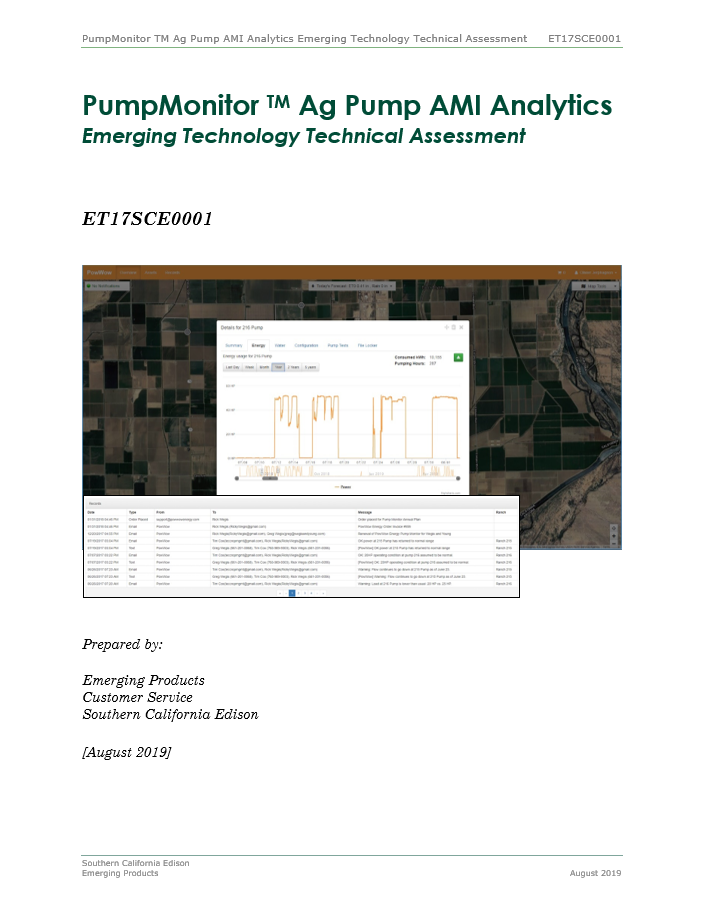Project Info
COMPLETE
 Project Title
Project Title
 Project Title
Project Title
Ag Pump AMI Analytics PowWow Study
Project Number ET17SCE0001 Organization SCE End-use Process Loads Sector Agricultural Project Year(s) 2017 - 2020Description
The goal of this study is to evaluate the effectiveness of PowWow “AMI-Pump Monitor” software.
This study will evaluate energy savings and the opportunity for Flexible DR as a result of subscription to PowWow’s trademarked “Pump Monitor” software. AMI-Pump Monitor is an annual software subscription that uses historical pump test reports and leverages the Green Button Program to collect electric interval meter data. The software is able to analyze data with proprietary algorithms to diagnose an impending or already occurring system decline. Feedback will be sent to the customer via text message or web surveillance to notify of system alerts. The customer is then able to proactively repair or change operations to effectively minimize water and energy waste. No supplemental hardware is needed.
